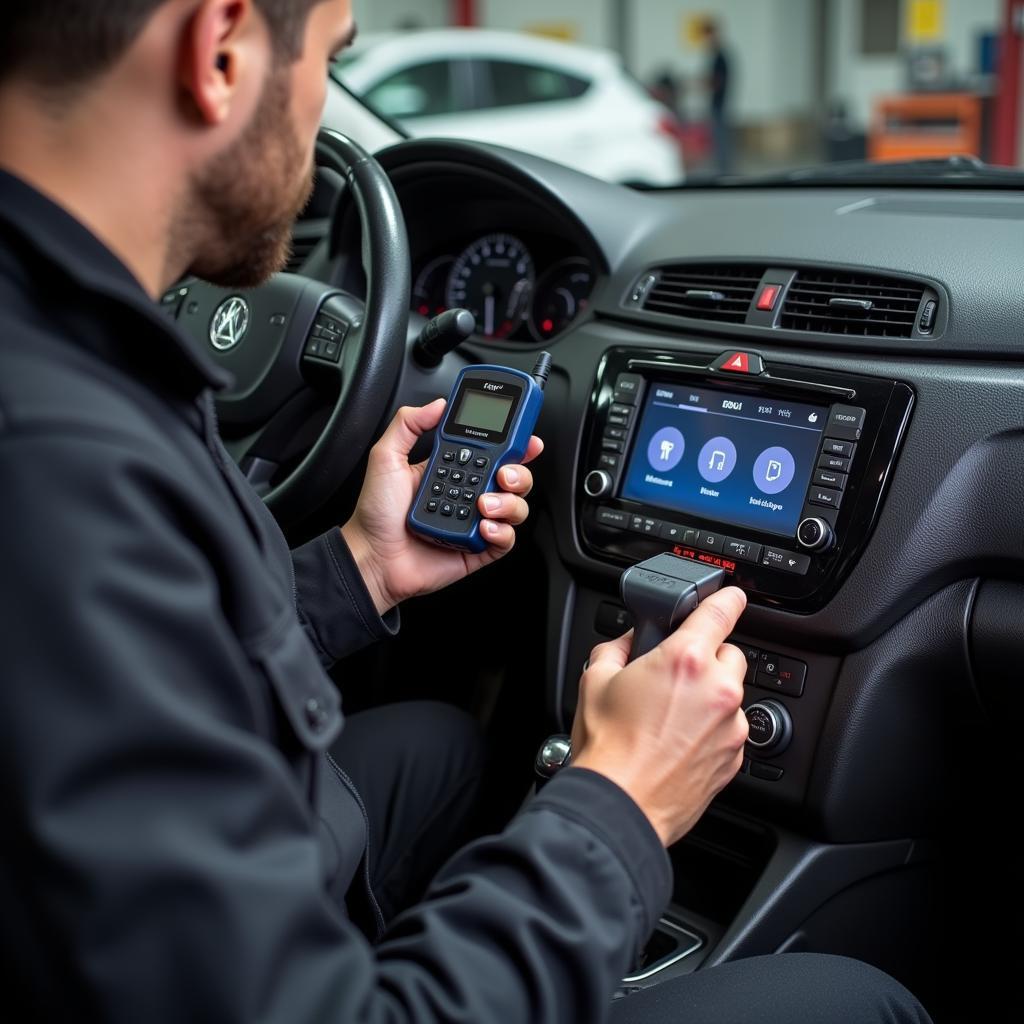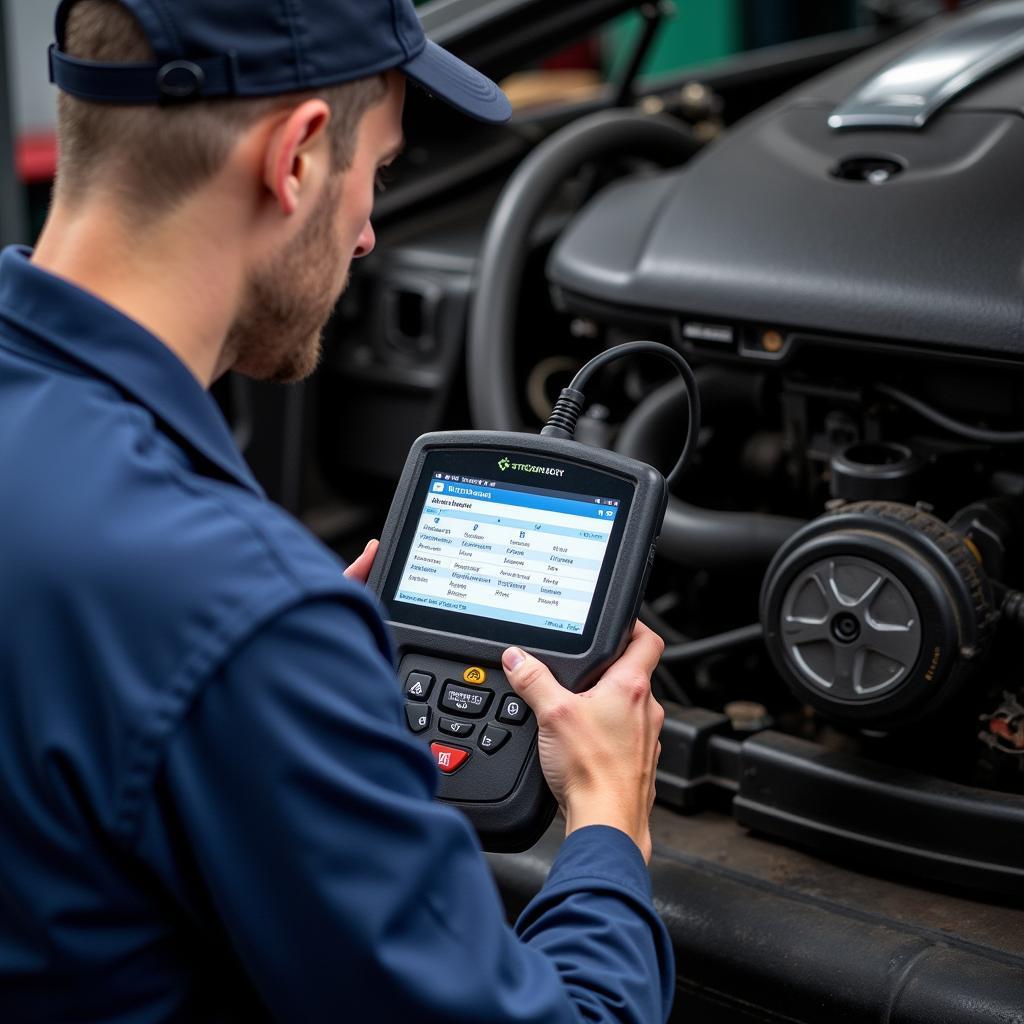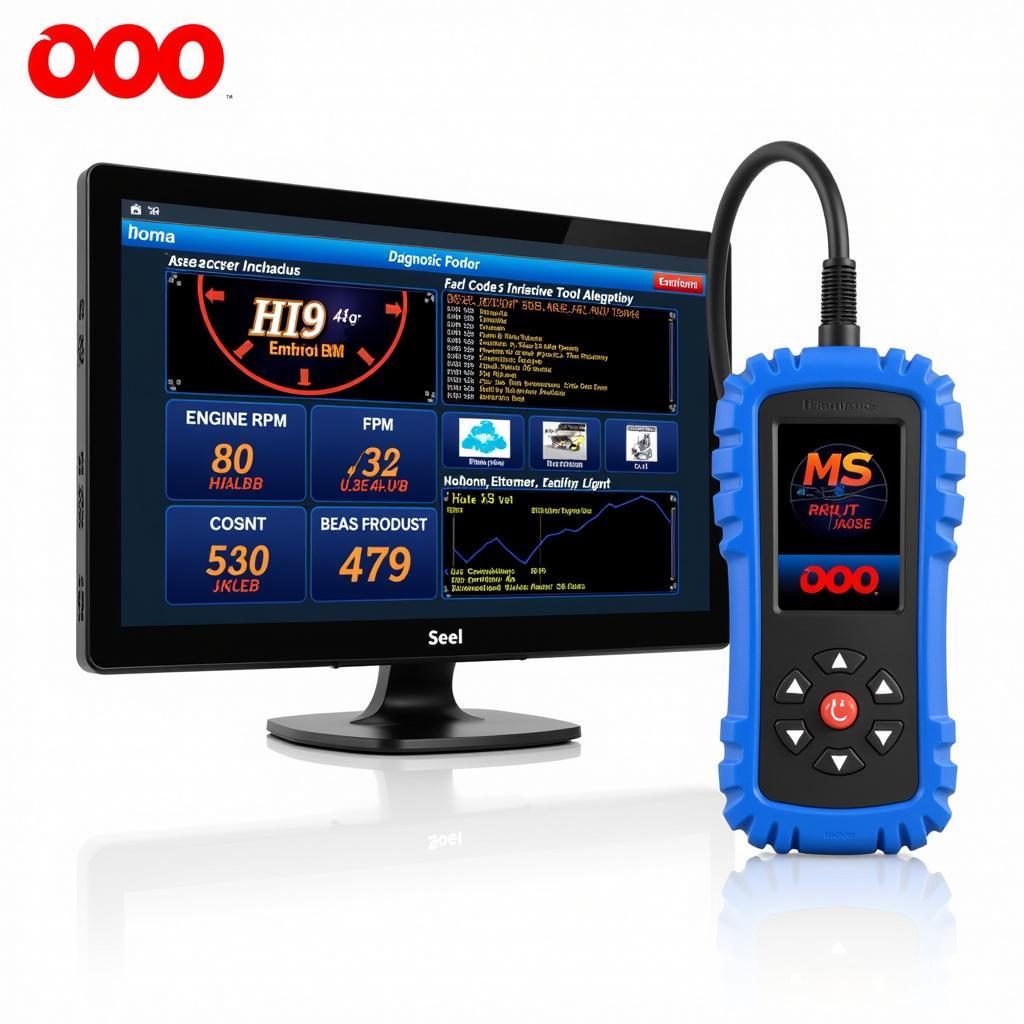The automotive industry is rapidly evolving, with technology playing an increasingly vital role. Gone are the days of simple mechanical fixes; modern vehicles are complex machines with intricate electronic systems. As a result, “All System Diagnostic Tools” have become indispensable for anyone involved in vehicle repair and maintenance, from professional mechanics to car enthusiasts.
 Mechanic using an all system diagnostic tool
Mechanic using an all system diagnostic tool
What is an All System Diagnostic Tool?
An all system diagnostic tool, often referred to as a car diagnostic scanner or OBD2 scanner, is a sophisticated device that allows you to communicate with your vehicle’s onboard computer system. It retrieves and interprets data from various Electronic Control Units (ECUs) within the vehicle, providing valuable insights into its health and performance.
Unlike basic code readers that simply display fault codes, all system diagnostic tools go a step further. They provide detailed information about the codes, such as:
- Code Description: A clear explanation of what the code means.
- Freeze Frame Data: A snapshot of the vehicle’s operating conditions when the code was triggered.
- Live Data Stream: Real-time data from various sensors, allowing you to monitor engine parameters, transmission performance, and more.
Why is an All System Diagnostic Tool Essential?
Owning an all system diagnostic tool can be beneficial for:
- Accurate Diagnosis: Pinpoint the root cause of issues quickly, saving time and guesswork.
- Cost Savings: Avoid unnecessary repairs by identifying the exact problem.
- Preventative Maintenance: Monitor your vehicle’s health and address potential issues before they escalate.
- Enhanced Understanding: Gain a deeper understanding of how your vehicle’s systems work.
Key Features to Look for in an All System Diagnostic Tool
When choosing an all system diagnostic tool, consider these factors:
- Vehicle Coverage: Ensure the tool is compatible with your vehicle’s make, model, and year.
- System Coverage: Look for tools that can access and diagnose all major systems, including engine, transmission, ABS, airbags, and more.
- User Interface: Opt for an intuitive interface with clear menus and easy navigation.
- Data Logging: The ability to record and playback live data can be valuable for diagnosing intermittent issues.
- Additional Features: Some tools offer advanced features like bi-directional control, which allows you to activate components for testing.
Common Applications of All System Diagnostic Tools
Here are some common ways all system diagnostic tools are used:
- Reading and Clearing Diagnostic Trouble Codes (DTCs): Easily identify and clear fault codes triggered by your vehicle’s ECU.
- Viewing Live Data: Monitor various engine and transmission parameters, including RPM, coolant temperature, oxygen sensor readings, and more.
- Performing Actuator Tests: Activate components like solenoids, relays, and motors to verify their functionality.
- Resetting Service Lights: After performing maintenance, use the tool to reset service reminders.
Choosing the Right All System Diagnostic Tool
The best all system diagnostic tool for you depends on your specific needs and budget.
- DIY Enthusiasts: For basic diagnostics and maintenance, a handheld OBD2 scanner with live data capabilities is sufficient.
- Professional Mechanics: Invest in a professional-grade scanner with extensive vehicle coverage, advanced features, and regular software updates.
 Mechanic diagnosing a car with an all system diagnostic tool
Mechanic diagnosing a car with an all system diagnostic tool
Conclusion
Investing in an all system diagnostic tool is a wise decision for any car owner or mechanic. These tools provide a wealth of information, allowing you to diagnose problems accurately, save money on repairs, and keep your vehicle running smoothly. By understanding the features and benefits of these tools, you can make an informed decision and choose the best one for your needs.
If you’re interested in exploring the world of all system diagnostic tools, ScanToolUS offers a wide range of options to suit your requirements. Contact us at +1 (641) 206-8880 or visit our office at 1615 S Laramie Ave, Cicero, IL 60804, USA. Our team of experts can help you find the perfect diagnostic tool to meet your automotive needs.
FAQs about All System Diagnostic Tools
1. Can I use an all system diagnostic tool on any car?
While most modern vehicles (post-1996) have an OBD2 port, the level of system access and functionality can vary depending on the tool and vehicle.
2. Will using a diagnostic tool void my car’s warranty?
No, using a diagnostic tool itself will not void your warranty. However, attempting repairs beyond your expertise could potentially lead to issues.
3. Can I use a diagnostic tool to tune my car’s performance?
While some advanced tools offer tuning capabilities, basic diagnostic tools are primarily designed for diagnosing and troubleshooting problems.
4. How often should I use an all system diagnostic tool?
It’s a good practice to scan your vehicle for codes periodically, especially if you notice any unusual performance issues.
5. Do I need to be a mechanic to use an all system diagnostic tool effectively?
While basic tools are user-friendly, some knowledge of car mechanics can be helpful in interpreting the data.
6. What are some popular brands of all system diagnostic tools?
The market offers a variety of brands, each with its own strengths. Research and choose a reputable brand that aligns with your needs.



